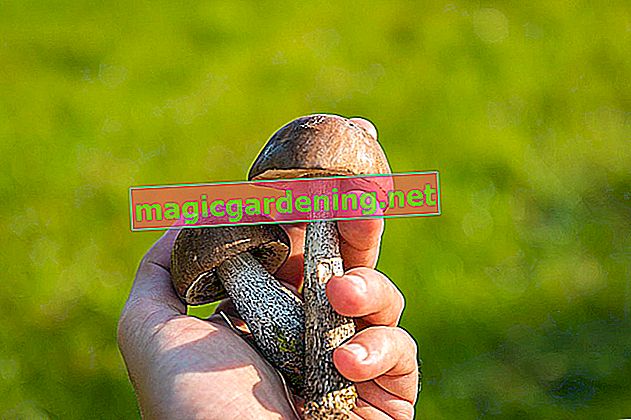
Giant hogweed - skin contact threatens burns
When giant hogweed is in full bloom, its decorative value is undeniable. The satanic side of natural beauty, on the other hand, is almost invisible in the form of toxic sap. Even light contact with the plant can cause second and third degree burns.
also read
- Recognize hogweed - important characteristics of the Hercules shrub
- Fight hogweed successfully - this is how you remove giant hogweed correctly
- Stay away from hogweed - the plant is that dangerous
It is tricky that the painful symptoms of poisoning only occur under the influence of sunlight. It starts with severe itching. The skin turns red to black and blisters.
Differentiate between toxic and harmless - this is how it works
In order to identify the dangerous candidate among the hogweed species, the focus is on the following two distinguishing features between poisonous giant hogweed and harmless meadow hogweed:
- Giant hogweed thrives with a red, speckled, hollow stem
- Poison hogweed towers over all harmless conspecifics with a height of up to 300 cm
The flowering time is another clue as to whether you are dealing with a poisonous or harmless hogweed. Giant hogweed only blooms from June to July. The flowering time of native hogweed, however, extends from June to September.
Tips
If a poisonous giant hogweed (Heracleum mantegazzianum) has crept into your garden, you should remove the intruder as soon as possible. In contrast to its harmless conspecifics, the uninvited guest tends to spread invasively through self-sowing. Please approach the floral aggressor well protected with overalls, boots, gloves and eye protection.








